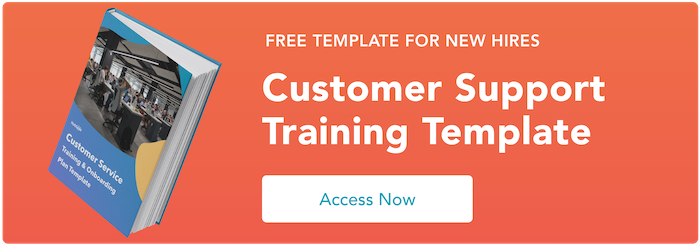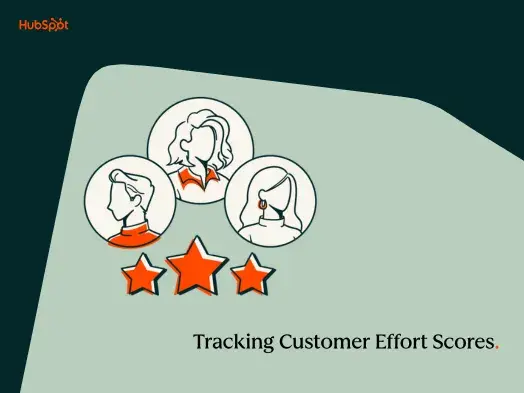In today‘s competitive landscape, customers’ expectations are soaring, and businesses can no longer rely solely on offering polite and reliable customer support. The new battleground is the relentless pursuit of striking the right balance between product quality vs. speed of service, determining which company can deliver top-notch service with swiftness.
In this post, we‘ll explain why speed of service (SOS) has become one of the most important metrics in customer support. Then, we’ll end the debate once and for all and tell you which is more important: speed of service or product quality.
What is speed of service?
Speed of service is a metric that measures how long it takes to complete a customer service action. It can be applied to various points in the customer journey and is used differently depending on the company, product, and industry.
Unlike response time, speed of service doesn't just look at how long it takes your service team to reply to the customer. It measures how long it takes them to respond to the customer and fulfill their support request.
For example, we could measure the speed of service for a pricing inquiry made over the phone. We would look at how much time the customer spent waiting on hold for your customer support team and how long the conversation took once they were connected to a rep. If there's any follow-up, that ongoing communication would also be considered part of the speed of service.
.png?)
Free Customer Support Training Template
Train and onboard your new customer support hires with this downloadable template.
- Training Timeline
- People to Meet
- 100 Day Goals
- And More!
Download Free
All fields are required.
.png?)
Why Speed of Service Is Important
As people expect more from customer service teams, speed of service has become a key metric in improving the customer experience.
According to Microsoft, 54% of consumers say they have higher expectations for customer service teams than one year ago. 72% of people expect your team to know who they are when they reach out, what they've purchased, and have insight into their past interactions with your company.
If your customer service team uses a CRM, it‘s easy to recall this information quickly. If they don’t have one, they lose time searching for data and increase the chances of churn since they're falling short of customer expectations.
Customers don‘t want to wait around for answers. If your service team looks like it’s scrambling to gather information, they'll lose faith that your business can provide effective support. Speed of service is also crucial on social media. In fact, 85% of consumers expect a response from a company on Facebook within six hours.
As customers continue to use these platforms for service needs, businesses must be prepared to meet their expectations regarding response times. Now that we‘ve described a few instances where speed of service is important, let’s settle the debate between product quality and speed of service.
What is product quality?
To understand how your customers will use your product is to understand product quality.
Product quality is how well a product satisfies customer needs, serves its purpose, and meets industry standards. Your customers should be connected to the product and should feel like it serves the purpose it's intended to.
Ensure quality is seamlessly felt through every customer touchpoint with your product. The customer should feel like it was designed with the anticipation of their needs.
What Customers Say
When it comes to balancing product quality and speed, what do customers say? Well, we went straight to the source to find out. In October 2023, HubSpot surveyed 150 people to find out.
We asked respondents about their last service experience that retained them as a loyal or happy customer. 11% cited speedy solutions or shorter interactions as positively impacting the experience. Another 10% cited speedy response times to messages or calls.
However, speed isn’t everything. When asked about experiences that pushed them away from brands, 14% of respondents said the customer service team did not take the time to understand their problems or needs.
Beyond that, you need to show that you understand your product, its quality, and its value proposition for customers. Of respondents, 13% said customer service teams that are unknowledgeable about a company's product or services push them away from the brand.
How to Improve Service Speed While Preserving Quality
1. Take feedback in stride.
There is something to be said about continuous improvement. Being able to take feedback in stride and work through adjustments and improvements while you’re considering your product development is crucial. This will help you work through bugs as they appear and deliver the level of product quality that your customers expect.
2. Set expectations.
To get both correct, it is going to take time. Setting expectations when pulling together this program will ensure understanding across your team. Don’t try to sacrifice speed for quality or vice versa. Be intentional with the work, learn during every iteration of testing, and apply learnings to continuously improve upon the speed and quality.
3. Make sure your team has everything they need.
With these new expectations, you should ensure your team is fully staffed to meet these expectations.
Is there a product or software that could be brought in to help with feedback or response times? Is the team fully staffed to manage these expectations? Check in with them to ensure the best possible product and team.
4. Take your time.
This may seem counter to everything that we’ve talked about previously, but if you are intentional with your responses, you can improve your speed.
Here is a chance to go slow to be faster in the end. Be thoughtful in your team’s responses while understanding where problems might have common threads. How did other members of your team handle a situation like the one you’re facing with your customer?
5. Don’t forget about one or the other.
The key to focusing on product quality and speed of service is to take both in stride. It's important to keep both at the top of mind, so one doesn’t fall by the wayside. Finding a balance between the two will help ensure success with your product program.
.png?)
Free Customer Support Training Template
Train and onboard your new customer support hires with this downloadable template.
- Training Timeline
- People to Meet
- 100 Day Goals
- And More!
Download Free
All fields are required.
.png?)
Product Quality vs. Speed of Service
The easy answer — and cop-out — is both. Both are incredibly important when it comes to providing an excellent customer experience. In a perfect world. But, if you had to prioritize one, you should start by assessing your product, company, and industry. What you sell, where you sell it, and who you sell it to will all affect whether your customers prefer product quality or speed of service. But according to our survey results, quality holds more weight — but it truly depends on your goals and set expectations.
.webp?width=650&height=435&name=emailmarketing_0%20(11).webp)
For example, if you're managing a quick-service restaurant, you might want to think about speed of service more than product quality. Customers getting in your drive-thru expect to be served within minutes, and most would rather get their food on time than make sure all of their french fries are perfectly cooked.
However, if you were selling luxury cars, you might be more concerned about the quality of your product than how quickly you can get it out the door. Take the Dodge Viper, for instance. Dodge only makes a couple hundred of these cars yearly, but they're worth about $100K each. For that price, Dodge needs to make a car that will wow its customer base and keep them happy over time.
The chart below can help you make this decision.
.webp?width=650&height=437&name=emailmarketing_2%20(8).webp)
“High head” refers to the critical thinking a customer needs to do to purchase a product. The more thought they put into it, the higher head it involves. “High heart” refers to the emotional investment that the customer has to make. Buying a car is a significant decision, and we either feel great or have buyer's remorse when making this big purchase.
Understanding where your brand falls on this chart will help you determine whether you should prioritize speed of service or product quality at your business. Of course, you want to optimize both, but understanding what people feel and think when buying your product will help you tailor your customer experience to their preferences.
Editor's note: This article was originally published in June 2021 and has since been updated for comprehensiveness.
Customer Service
.png?width=112&height=112&name=Image%20Hackathon%20%E2%80%93%20Vertical%20(37).png)







.png)

-2.png)

